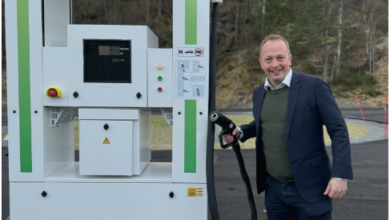Liverpool City doubles its proposed hydrogen bus fleet size
Hydrogen-powered buses will help the city tackle poor air quality and achieve its ambition of being net-zero carbon by 2040.

Liverpool City Region, which initially planned to buy 20 double-decker hydrogen buses, has now decided to increase its fleet size to 40 vehicles, H2 Bulletin reports.
In the Combined Authority (CA) meeting, it has been agreed to bid for extra funding to increase the hydrogen bus fleet to 40 vehicles which would be enough to service the route fully.
Funding for buying 20 double-decker hydrogen buses is already in place to serve the city region’s busiest route – the 10A between St Helens and Liverpool city centre. In March this year, the Liverpool City Region announced that its bid for 20 hydrogen-powered double-decker buses is set to secure a funding boost of up to £12.5 million from the Transforming Cities Fund (TCF).
The funding for the additional 20 hydrogen buses would be sourced through applying for the government’s Zero Emission Bus Regional Area scheme (ZEBRA). Subject to approval, the funding would cover up to 75% of the cost difference between hydrogen-powered vehicles and a standard bus.
The procurement process has already been started for the city region’s hydrogen buses and would be ready for operation next year. A broader plan also includes building hydrogen refuelling facilities set to start later this year, a first of its kind in the North West.
Steve Rotheram, Metro Mayor of the Liverpool City Region, said, “My plans to deliver a London-style transport system that is quick, cheap and reliable, and a Green Industrial Revolution that tackles the climate crisis.”
He further added, “82% of all public transport journeys in our region are taken by bus and this new fleet will give people a clean, green and comfortable way to get about.”
The Metro Mayor has set a target for the Liverpool City Region to achieve its carbon neutrality status by 2040. More than 70% of the existing bus fleet in the city region is low emissions due to cleaner engines, hybrid and electric power and biomethane gas.
